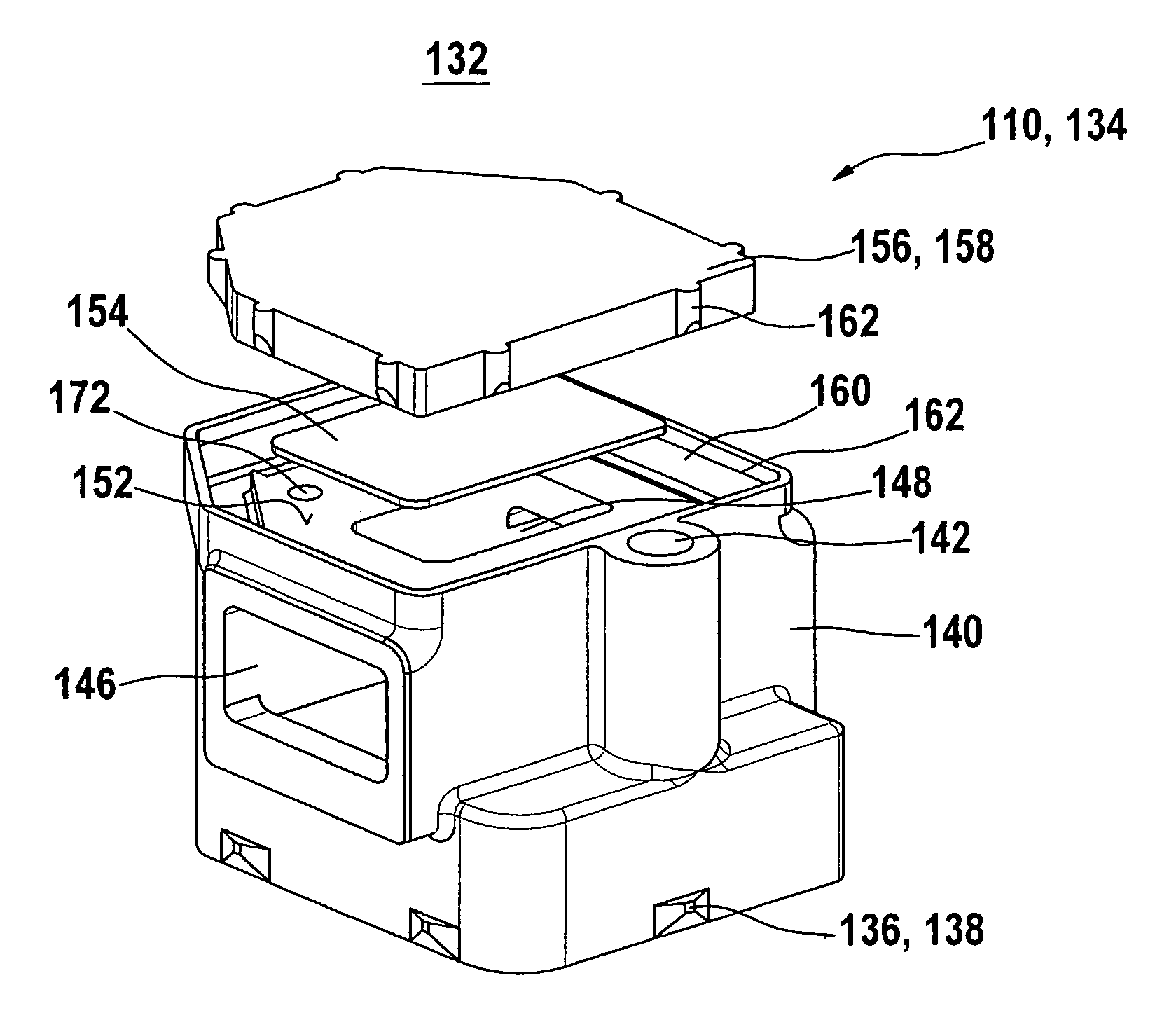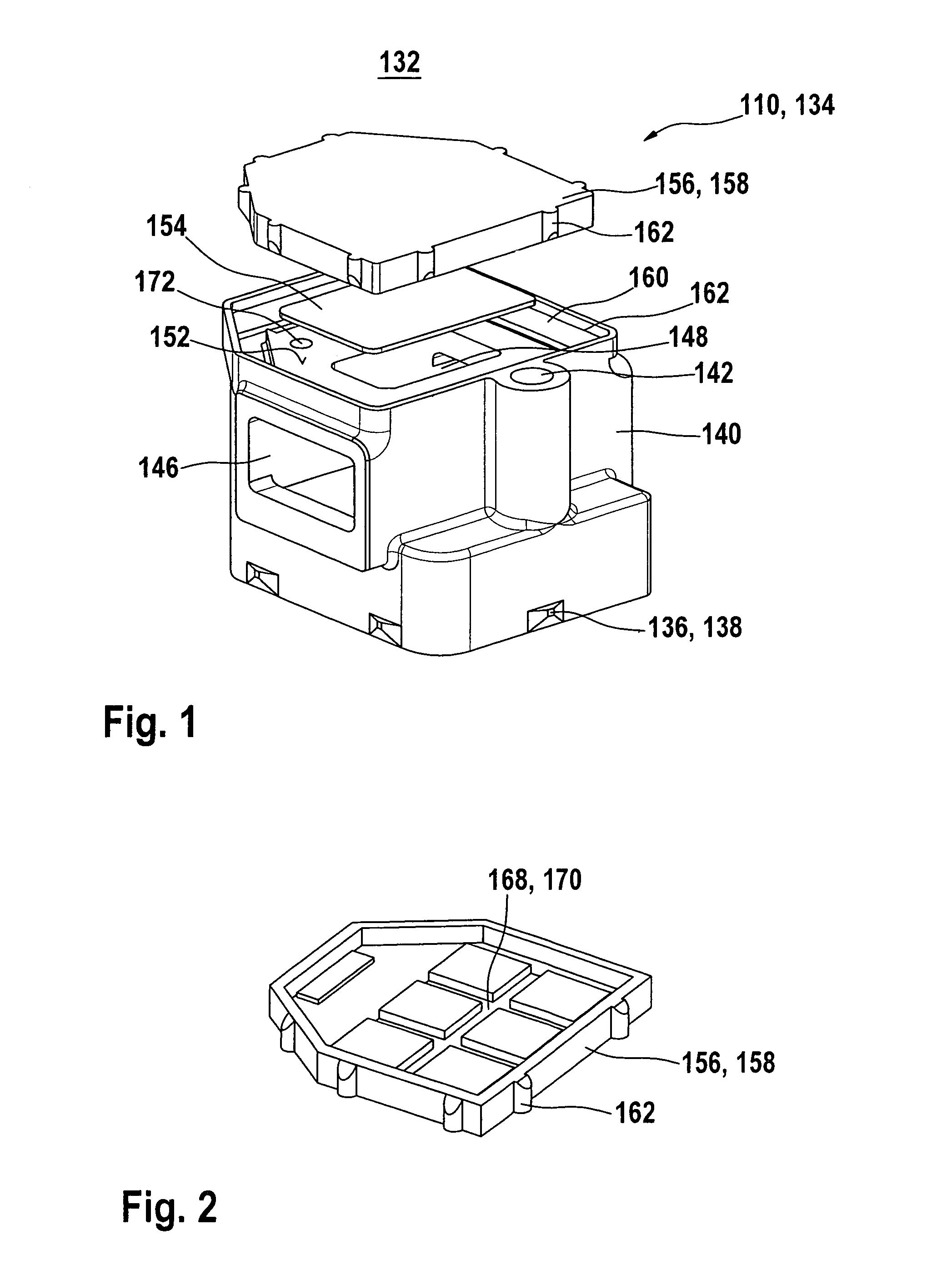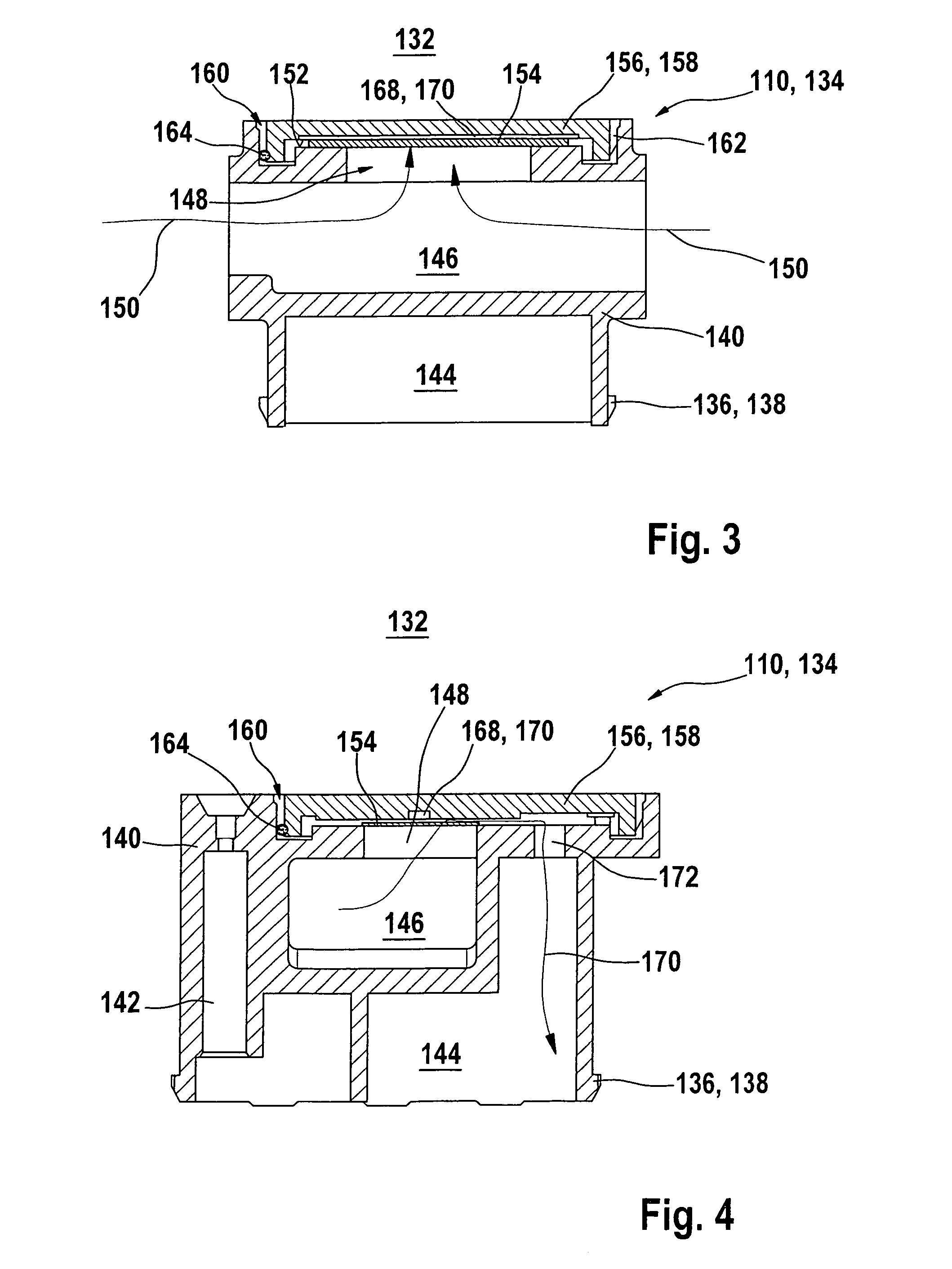Pressure compensation unit for use in a pressure sensor
a pressure sensor and compensation unit technology, applied in the field of pressure sensors, can solve the problems of affecting the function, affecting the accuracy of pressure measurement, and requiring a large installation space for pressure compensation units, so as to avoid capillary effects, facilitate and quickly produce, and prevent capillary effects
- Summary
- Abstract
- Description
- Claims
- Application Information
AI Technical Summary
Benefits of technology
Problems solved by technology
Method used
Image
Examples
Embodiment Construction
[0025]FIGS. 1 through 4 show different representations of an exemplary embodiment of a pressure compensation unit 110 according to the present invention by way of example. This pressure compensation unit may be used, for example, in a pressure sensor 112, which is shown in a perspective sectional representation in FIG. 5 and may be designed, in particular, as a fuel tank pressure sensor 114. Reference is made below to all figures, the functionality of pressure sensor 112 being described first on the basis of the representation in FIG. 5.
[0026]Pressure sensor 112 includes a sensor housing 116, which may be designed, for example, as an injection molded component. This component includes an electrical connector 118 for electrical contacting of pressure sensor 112. Pressure sensor 112 also has a connecting piece 120 having a measured pressure supply means 122 in the form of a pressure channel. Connecting piece 120 may be introduced into a wall of a measuring chamber 126, for example a f...
PUM
| Property | Measurement | Unit |
|---|---|---|
| length | aaaaa | aaaaa |
| length | aaaaa | aaaaa |
| length | aaaaa | aaaaa |
Abstract
Description
Claims
Application Information
 Login to View More
Login to View More - R&D
- Intellectual Property
- Life Sciences
- Materials
- Tech Scout
- Unparalleled Data Quality
- Higher Quality Content
- 60% Fewer Hallucinations
Browse by: Latest US Patents, China's latest patents, Technical Efficacy Thesaurus, Application Domain, Technology Topic, Popular Technical Reports.
© 2025 PatSnap. All rights reserved.Legal|Privacy policy|Modern Slavery Act Transparency Statement|Sitemap|About US| Contact US: help@patsnap.com



